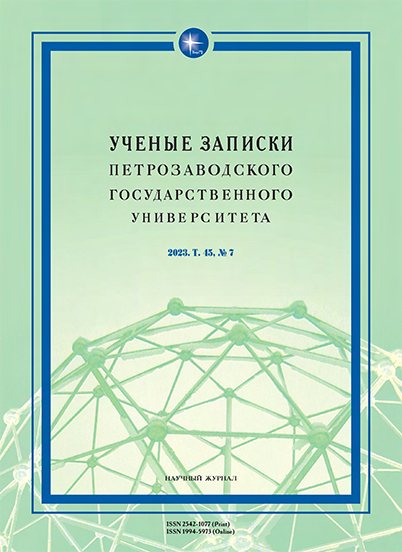ЛЕКСИЧЕСКИЕ И КУЛЬТУРНО-ИСТОРИЧЕСКИЕ РЕАЛИИ ТЕКСТОВ «HERMENEUMATA PSEUDODOSITHEANA»
LEXICAL, CULTURAL AND HISTORICAL REALITIES OF THE HERMENEUMATA PSEUDODOSITHEANA TEXTS
Author(s): Julija Tarasovna Leybenson, Emir Rustemovich MamudovSubject(s): Language studies, Language and Literature Studies, Studies of Literature, Philology
Published by: Петрозаводский государственный университет
Keywords: antiquity; Latin language; Greek language; lexicon; Hermeneumata Pseudodositheana (Interpretations of Pseudo-Dositheus);
Summary/Abstract: This article deals with lexical correspondences, borrowings and calques in the texts of the bilingual monument of educational literature of the Late Antiquity period known as the Hermeneumata Pseudodositheana (Interpretations of Pseudo-Dositheus). The relevance of the research topic lies in the fact that various editions of this collection of texts fixing the historical, legal and religious realities of the Late Antiquity are obviously of great interest for historical and linguistic research. The aim of the authors is to analyze various types of interactions between the Greek and Latin languages reflected in the texts of the Hermeneumata Pseudodositheana corpus. The analysis of these texts with different content (the norms of law, mythology, gnomic literature, thematic and alphabetical dictionaries, phrasebooks) revealed Greek-Latin lexical correspondences in the fi eld of politics and state structure, law, economics, culture, religion, mythology, and everyday life. This study also demonstrates that Latin vocabulary borrowings in Greek are mainly characteristic of the legal and political spheres. However, this trend was not stable: Greek analogies were used for Latin magistracy and legal terms, but not necessarily accurate ones. Mythological and religious correspondences, where a large number of Greek words adopted by the Latin language and Greek borrowings prevailed, also vary in different editions of the texts. The long transformation of the Hermeneumata Pseudodositheana collection led not only to the formation of Greek-Latin correspondences, but also to the borrowing of concepts from Eastern cultures: Phoenician, Egyptian and Jewish ones (in the latter case – probably through the spread of Christianity). This article demonstrates for the first time the examples of such interaction between the Greek, Latin and Semitic languages in the corpus of Hermeneumata Pseudodositheana.
Journal: Ученые записки Петрозаводского государственного университета
- Issue Year: 45/2023
- Issue No: 7
- Page Range: 43-48
- Page Count: 6
- Language: Russian

